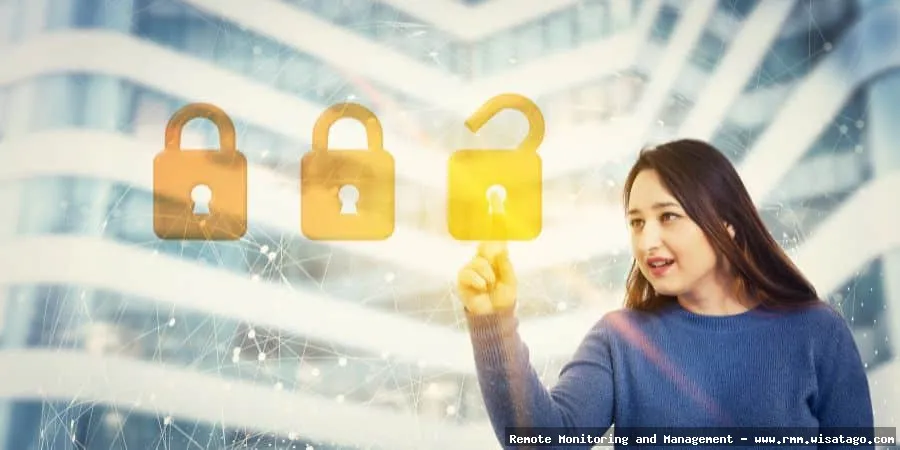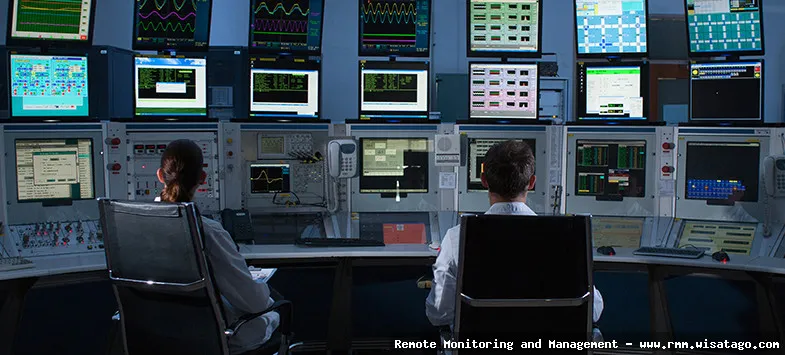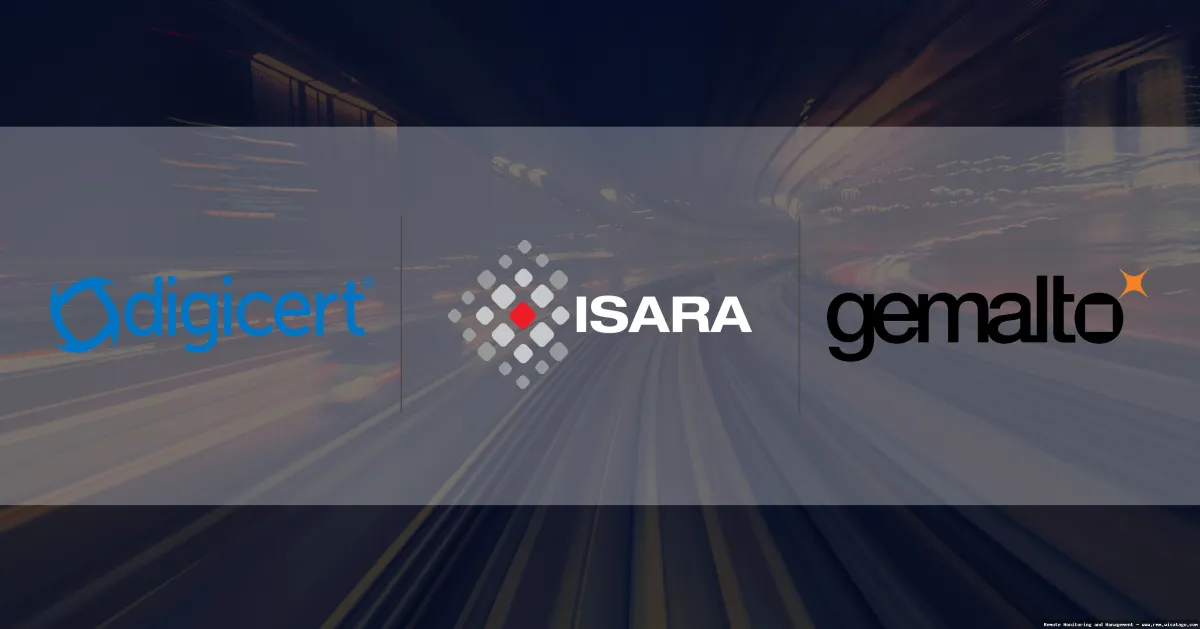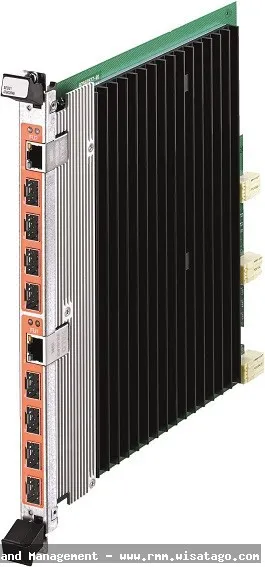Quantum-Safe Encryption In Modern RMM Platforms: Complete Guide, Features and Details
Remote Monitoring and Management (RMM) platforms have become the backbone of modern IT service delivery. They empower managed service providers (MSPs) and internal IT departments to proactively manage, monitor, and secure endpoints, networks, and servers from a central location. The ability to remotely access and control these systems is crucial for efficiency and responsiveness, but it also introduces significant security vulnerabilities. Sensitive data, configuration settings, and even remote access credentials traverse these RMM systems, making them prime targets for cyberattacks. As the threat landscape continues to evolve, with increasingly sophisticated attacks and the looming threat of quantum computing, traditional encryption methods may no longer be sufficient to protect this critical infrastructure.
Quantum computing, while still in its nascent stages, poses a significant long-term threat to current cryptographic algorithms. Many of the encryption methods used today, such as RSA and ECC, rely on mathematical problems that are difficult for classical computers to solve but could be easily cracked by a sufficiently powerful quantum computer. This means that data encrypted today could be vulnerable in the future, even if it’s considered secure now. This is especially concerning for data with long-term sensitivity, such as intellectual property, financial records, and personal information.

That’s where quantum-safe encryption, also known as post-quantum cryptography (PQC), comes into play. It refers to cryptographic algorithms that are believed to be resistant to attacks from both classical and quantum computers. Integrating quantum-safe encryption into RMM platforms is no longer a futuristic concept; it’s a necessary step to future-proof these systems and ensure the long-term security of the IT infrastructure they manage. This article will delve into the details of quantum-safe encryption, its importance in modern RMM platforms, the features and benefits it offers, and the challenges involved in its implementation.
Understanding Quantum-Safe Encryption
Quantum-safe encryption, or post-quantum cryptography (PQC), is a field of cryptography focused on developing algorithms that are resistant to attacks from both classical and quantum computers. Unlike traditional encryption methods, which rely on mathematical problems that are difficult for classical computers but vulnerable to quantum algorithms like Shor’s algorithm, PQC algorithms are designed to remain secure even in the presence of a quantum computer. For more information, you can refer to RMM as an additional resource.
The Threat of Quantum Computing to Current Encryption
The threat posed by quantum computing stems from its ability to efficiently solve certain mathematical problems that are intractable for classical computers. Shor’s algorithm, for example, can factor large numbers and solve the discrete logarithm problem exponentially faster than the best-known classical algorithms. These problems are the foundation of widely used public-key cryptosystems like RSA and ECC. Once a sufficiently powerful quantum computer is available, these systems could be easily broken, exposing sensitive data and compromising the security of critical infrastructure.
Types of Quantum-Safe Algorithms
Several families of quantum-safe algorithms are currently being researched and developed. The National Institute of Standards and Technology (NIST) is actively working to standardize a set of PQC algorithms. Some of the leading candidates include:
- Lattice-based cryptography: This approach relies on the difficulty of solving problems related to lattices in high-dimensional spaces. Examples include CRYSTALS-Kyber (key encapsulation mechanism) and CRYSTALS-Dilithium (digital signature).
- Code-based cryptography: This is based on the difficulty of decoding random linear codes. One example is McEliece.
- Multivariate cryptography: This uses systems of multivariate polynomial equations over finite fields.
- Hash-based cryptography: This relies on the security of cryptographic hash functions. One example is SPHINCS+.
- Isogeny-based cryptography: This is based on the difficulty of finding isogenies between elliptic curves. One example is SIKE (Supersingular Isogeny Key Encapsulation). Note: SIKE was later broken, highlighting the importance of rigorous testing and standardization.
The NIST Standardization Process
NIST is playing a crucial role in the development and standardization of PQC algorithms. Through a multi-round competition, NIST is evaluating various candidate algorithms for their security, performance, and suitability for different applications. The goal is to select a set of algorithms that can be widely adopted and used to protect sensitive data against quantum attacks. The first set of standards was released in 2022, marking a significant milestone in the transition to quantum-safe cryptography.
Why Quantum-Safe Encryption is Crucial for RMM Platforms
RMM platforms are critical infrastructure components, and their security is paramount. Integrating quantum-safe encryption into RMM platforms is essential for several reasons:
Protecting Sensitive Data in Transit and at Rest
RMM platforms handle a vast amount of sensitive data, including credentials, configuration settings, software deployment packages, and monitoring data. This data is transmitted between the RMM server and managed endpoints, and it’s also stored on the RMM server. Quantum-safe encryption ensures that this data remains protected, even if current encryption methods are compromised by a quantum computer.

Securing Remote Access and Control
Remote access and control are core features of RMM platforms. However, they also represent a significant security risk if compromised. Quantum-safe encryption can secure the communication channels used for remote access, preventing attackers from intercepting credentials or injecting malicious code.
Maintaining Business Continuity
A successful attack on an RMM platform can have devastating consequences for businesses, leading to data breaches, system downtime, and reputational damage. By implementing quantum-safe encryption, organizations can significantly reduce the risk of such attacks and maintain business continuity.
Meeting Compliance Requirements
Many industries are subject to strict data security regulations, such as HIPAA, PCI DSS, and GDPR. These regulations require organizations to implement appropriate security measures to protect sensitive data. As quantum computing becomes a more realistic threat, regulators may begin to mandate the use of quantum-safe encryption. Implementing PQC proactively can help organizations meet these compliance requirements.
Features and Benefits of Quantum-Safe RMM Platforms
RMM platforms that incorporate quantum-safe encryption offer a range of features and benefits:
Enhanced Security Posture
The primary benefit of quantum-safe RMM platforms is a significantly enhanced security posture. By using PQC algorithms, these platforms provide a higher level of protection against both classical and quantum attacks, reducing the risk of data breaches and other security incidents.
Future-Proofing IT Infrastructure
Implementing quantum-safe encryption is a proactive measure that helps organizations future-proof their IT infrastructure. By preparing for the quantum threat now, they can avoid costly and disruptive upgrades later.
Improved Trust and Confidence
Using a quantum-safe RMM platform can improve trust and confidence among customers and stakeholders. It demonstrates a commitment to security and data protection, which can be a valuable competitive advantage.

Reduced Risk of Supply Chain Attacks
RMM platforms are often targeted in supply chain attacks, where attackers compromise the RMM platform to gain access to the networks and systems of its customers. Quantum-safe encryption can help to mitigate this risk by making it more difficult for attackers to compromise the RMM platform.
Challenges in Implementing Quantum-Safe Encryption in RMM Platforms
While the benefits of quantum-safe encryption are clear, there are also several challenges involved in its implementation:
Algorithm Selection and Standardization
The field of quantum-safe cryptography is still evolving, and there is no single, universally accepted algorithm. Choosing the right algorithm for a specific application can be challenging. Furthermore, the NIST standardization process is ongoing, and the final set of standardized algorithms may differ from the current candidates. RMM vendors need to carefully evaluate the available algorithms and choose those that are most suitable for their platform and their customers’ needs.
Performance Overhead
Quantum-safe algorithms can be more computationally intensive than traditional encryption methods. This can lead to performance overhead, such as increased CPU usage and longer processing times. RMM vendors need to optimize their implementations to minimize the performance impact of PQC algorithms.
Key Management Complexity
Key management is a critical aspect of any cryptographic system. Quantum-safe encryption can add complexity to key management, particularly when dealing with large numbers of endpoints. RMM vendors need to develop robust and scalable key management solutions that can handle the demands of PQC.
Interoperability Issues
Interoperability between different systems and devices is essential for RMM platforms. Implementing quantum-safe encryption can introduce interoperability challenges, particularly when communicating with older systems that do not support PQC algorithms. RMM vendors need to address these challenges to ensure that their platforms can seamlessly integrate with existing IT infrastructure.
Transition and Migration Strategies
Migrating to quantum-safe encryption is a complex process that requires careful planning and execution. RMM vendors need to develop clear transition and migration strategies to minimize disruption and ensure a smooth transition to PQC. This may involve a phased approach, where PQC algorithms are gradually introduced alongside traditional encryption methods.

The Future of Quantum-Safe RMM Platforms
The future of RMM platforms is undoubtedly intertwined with quantum-safe encryption. As quantum computing technology advances, the need for PQC will only become more pressing. We can expect to see the following trends in the coming years:
Wider Adoption of Quantum-Safe Algorithms
As NIST finalizes its standardization process, we can expect to see wider adoption of quantum-safe algorithms in RMM platforms and other security products. This will lead to a more secure and resilient IT ecosystem.
Integration with Existing Security Tools
Quantum-safe encryption will be increasingly integrated with existing security tools, such as firewalls, intrusion detection systems, and security information and event management (SIEM) systems. This will provide a more comprehensive and layered approach to security.
Development of Quantum-Resistant Hardware
Hardware vendors are already starting to develop quantum-resistant hardware, such as cryptographic accelerators and secure enclaves. This will help to improve the performance and security of quantum-safe encryption.
Increased Awareness and Education
As the threat of quantum computing becomes more widely understood, there will be increased awareness and education about quantum-safe encryption. This will drive demand for PQC solutions and accelerate their adoption.
In conclusion, quantum-safe encryption is a critical component of modern RMM platforms. By implementing PQC algorithms, RMM vendors can protect sensitive data, secure remote access, maintain business continuity, and meet compliance requirements. While there are challenges involved in implementing quantum-safe encryption, the benefits far outweigh the risks. As quantum computing technology continues to advance, quantum-safe RMM platforms will become increasingly essential for protecting IT infrastructure from both classical and quantum attacks.
Conclusion
As we’ve explored, the looming threat of quantum computing poses a significant challenge to the security landscape, particularly for RMM platforms responsible for managing and securing vast networks of endpoints. The migration to quantum-safe encryption is no longer a futuristic consideration but a present-day necessity. Ignoring the potential vulnerabilities that quantum computers could exploit in existing cryptographic algorithms could lead to devastating consequences, including data breaches, system compromises, and irreparable reputational damage for both RMM providers and their clients. Implementing post-quantum cryptography (PQC) within RMM platforms is a complex undertaking, requiring careful planning, resource allocation, and a deep understanding of the available algorithms and their associated performance trade-offs.
Ultimately, the security and reliability of modern RMM platforms hinge on their ability to adapt and integrate quantum-safe encryption methods. The journey towards PQC adoption is a continuous process, demanding ongoing vigilance and proactive measures. We encourage all RMM providers and IT professionals to begin evaluating and piloting quantum-resistant algorithms within their environments. Staying informed about the latest advancements in PQC and engaging with industry experts is crucial. To learn more about specific solutions and implementation strategies, we invite you to visit our resource center at https://www.example.com/quantum-safe-rmm and take the first step towards securing your future against the quantum threat.
Frequently Asked Questions (FAQ) about Quantum-Safe Encryption in Modern RMM Platforms
What are the potential security risks to RMM platforms from quantum computing attacks, and why is quantum-safe encryption necessary for protecting sensitive client data managed through these systems?
Quantum computing poses a significant threat to modern encryption algorithms used in RMM (Remote Monitoring and Management) platforms. Current encryption standards like RSA and ECC are vulnerable to attacks from sufficiently powerful quantum computers running Shor’s algorithm. This means that sensitive client data, including passwords, credentials, and confidential business information managed through RMMs, could be decrypted by malicious actors in the future. Quantum-safe encryption, also known as post-quantum cryptography (PQC), involves using cryptographic algorithms that are resistant to attacks from both classical and quantum computers. Implementing PQC in RMM platforms is crucial for ensuring long-term data security and maintaining client trust, protecting against future threats that classical encryption cannot withstand. Without it, the integrity and confidentiality of managed systems are at risk.
How can RMM providers begin implementing quantum-safe encryption strategies within their existing platforms, and what are some of the key challenges they might face during the transition process?
RMM providers can begin implementing quantum-safe encryption by first assessing their current cryptographic infrastructure and identifying areas vulnerable to quantum attacks. This involves understanding which algorithms are in use and prioritizing systems handling the most sensitive data. Next, they should explore and pilot post-quantum cryptographic (PQC) algorithms recommended by NIST (National Institute of Standards and Technology) and other standardization bodies. Challenges during the transition include the computational overhead of some PQC algorithms, which may impact performance. Integration with existing systems and ensuring compatibility with client devices can also be complex. Furthermore, the RMM provider needs to retrain staff on these new cryptographic methods and educate their clients on the importance of quantum-safe security. A phased approach, focusing on the most critical systems first, is often recommended.
What specific quantum-safe encryption algorithms are being considered for use in RMM platforms, and what are the pros and cons of each in terms of security, performance, and ease of integration into existing systems?
Several post-quantum cryptography (PQC) algorithms are being considered for RMM platforms. NIST’s PQC Standardization Project has identified algorithms like CRYSTALS-Kyber (key encapsulation mechanism) and CRYSTALS-Dilithium (digital signature) as promising candidates. Kyber offers relatively good performance and integration, but larger key sizes compared to pre-quantum algorithms. Dilithium also offers strong security but comes with a larger signature size. Other algorithms like Falcon (signature) and SABER (key encapsulation) have their own tradeoffs. Falcon provides smaller signatures, ideal for bandwidth-constrained environments. SABER aims for a balance between security and performance. The choice of algorithm depends on the specific RMM platform’s requirements. Security, performance (CPU usage, latency), key/signature size, and ease of integration are all critical factors when selecting a PQC algorithm.